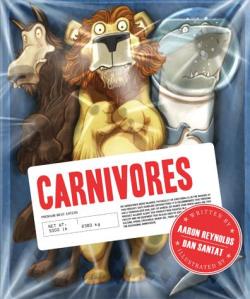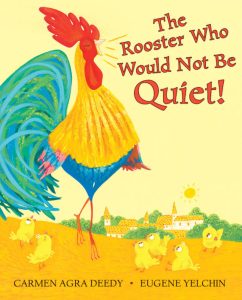by Carrie Finison
If you’ve studied story structure, you’re familiar with the classic narrative arc: main character has a problem or wants something, makes several attempts to solve her problem, learns a little something along the way, and finally uses that learning to resolve her problem or get what she wants. Growth and change in the main character is key to many of these stories.
BUT…what if that thing your character wants, or that problem she’s trying to solve, is in direct opposition to an innate character trait—something she CANNOT CHANGE about herself?
What if your character has fabulous hair, but feels uncomfortable when people touch it?
Don’t Touch My Hair by Sharee Miller
What if your character is a bear, but would rather be a bunny? Or is a frog, but would rather be…anything else?
Bunnybear by Andrea J. Loney, illustrated by Carmen Saldaña
I Don’t Want to Be a Frog by Dev Petty, illustrated by Mike Boldt


What if your character is big and mean and grouchy, but is continually followed around by small, adorable creatures?
Big Mean Mike by Michelle Knudsen, illustrated by Scott Magoon
Mother Bruce by Ryan T. Higgins


What if your character needs her personal space, but has waaaay too many siblings?
Charlotte the Scientist is Squished by Camille Andros, illustrated by Brianne Farley

What if a group of carnivores tries to go vegetarian?
Carnivores by Aaron Reynolds, illustrated by Dan Santat

What if your character is a very loud rooster who lives in a very quiet town?
The Rooster Who Would Not Be Quiet by Carmen Agra Deedy, illustrated by Eugene Yelchin

What if your character is so huggable that everyone wants to give him a squeeze, but he’s not the hugging kind? That’s how the idea for my upcoming picture book DON’T HUG DOUG, illustrated by Daniel Wiseman, came to me.

I knew this was a common problem—we all know kids who have gone through a no-hugs phase, kids who avoid hugs due to sensory issues, and conversely, kids (and—ahem!—adults) who are overenthusiastic huggers. What if, I thought, a kid who doesn’t like hugs is just so puppy-dog-eyes adorable that EVERYONE wants to hug him? Instant conflict!
These books are often about personal boundaries, identity, or personality. They’re humorous and can be fun to read but—writer beware—they can be difficult to write, as I quickly found with my hugging story. Why? Because as I stated at the start of this post, problems that are in opposition to an innate character trait usually cannot be resolved (or at least, can’t be happily resolved) the “old fashioned way”—by the main character changing. Something else has gotta give. Find these books and study their endings to see how the authors handled this dilemma.
In the meantime, have fun making your characters miserable!

 Carrie Finison began her literary career at the age of seven with an idea, a box of markers, and her father’s typewriter. She has been writing off and on ever since, though she has (somewhat regretfully) traded in the typewriter for a laptop. Her first picture book, DOZENS OF DOUGHNUTS, was published in July, 2020. Her second book, DON’T HUG DOUG, illustrated by Daniel Wiseman, will hit the shelves this month, on January 26 and has earned a starred review from Kirkus. She lives outside Boston with her husband, son, daughter, and two cats who permit her to write in their cozy attic office. For updates, subscribe to her newsletter, check out her website, or follow on Twitter @CarrieFinison, Facebook, or Instagram @carriefinison.
Carrie Finison began her literary career at the age of seven with an idea, a box of markers, and her father’s typewriter. She has been writing off and on ever since, though she has (somewhat regretfully) traded in the typewriter for a laptop. Her first picture book, DOZENS OF DOUGHNUTS, was published in July, 2020. Her second book, DON’T HUG DOUG, illustrated by Daniel Wiseman, will hit the shelves this month, on January 26 and has earned a starred review from Kirkus. She lives outside Boston with her husband, son, daughter, and two cats who permit her to write in their cozy attic office. For updates, subscribe to her newsletter, check out her website, or follow on Twitter @CarrieFinison, Facebook, or Instagram @carriefinison.

Carrie is giving away a picture book critique.
Leave one comment below to enter.
You’re eligible to win if you’re a registered Storystorm participant and you have commented once below.
Source : Storystorm 2021 Day 11: Carrie Finison Makes Her Characters Miserable











